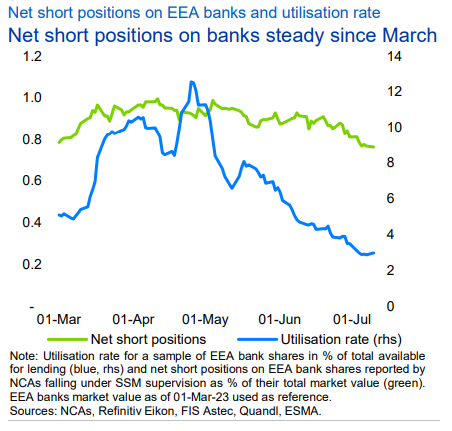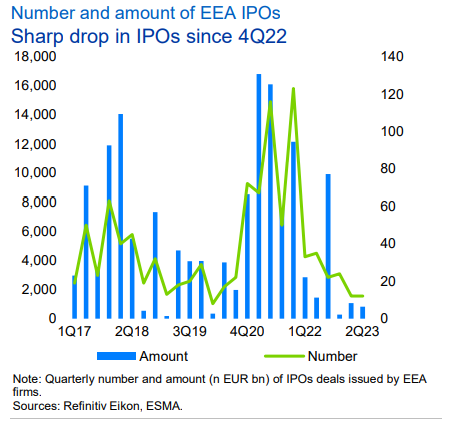The European Securities and Markets Authority (ESMA) published the second Trends, Risks and Vulnerabilities (TRV) report of 2023. ESMA sees that financial markets are adapting to the new economic environment of durably higher inflation and interest rates, however risks remain high in ESMA’s remit. Markets are set to remain very sensitive to potential deteriorations in economic fundamentals or risks in the financial sector.
Verena Ross, ESMA’s chair, said in a statement: “Financial market sentiment improved in the first half of the year, despite the market stress originating from the US banking sector. Nonetheless, the economic outlook remains fragile and uncertainties continue to drive markets. ESMA is therefore keeping the overall risk assessment across its remit at the highest level.
“There is a high risk of corrections in a context of fragile market liquidity in equity and bond markets, with short-term risks for consumers due to volatility and the impact of inflation on real investment returns.
“Maintaining an environment of trust is of a particular concern to ESMA. In this context, attention must be paid to the risk of greenwashing, as the EU market for sustainable products continues to grow at a robust pace.”
Financial markets rebounded in the first half of 2023 (H123) against the background of lower energy prices and expectations of a slower pace of monetary tightening. However, this improvement remains fragile. The downside risks have increased while there remains a high degree of market and investor nervousness.

Activity in European securities lending markets increased in 1H23, with moderate growth in volumes and utilization rates of equity lending linked to the dividend season. Shares of European banks displayed an earlier-than-usual uptick in utilization rate, which showed a rapid rise from mid-March 2023 onwards, relating to turmoil in the US banking sector. However, contrary to US regional banks, short selling positions reported under the Short Selling Regulation for EEA banks remain contained. Following peak levels reached due to the dividend season, the utilization rate of EU banks quickly decreased.
Market-based finance
The main findings for market-based finance was that the ability of non-financial corporations to raise funds through capital markets slightly picked up in H123 from the lows observed in 2022. Corporate bond issuance peaked, with concentration in shorter term maturities given monetary policy expectations.
ESMA also noted renewed confidence in bond finance. After a slow 2022, the European corporate bond primary market recovered in the first quarter of 2023 (Q123) with a record quarterly issuance since the early 2000s. The surge seemed linked to interest rate expectations rather than to short-term liquidity needs.
On the one hand, with the prospect of higher for longer interest rates companies have been rushing to issue bonds in order to secure cheaper deals. On the other hand, expectations on cooling inflation and slowing rate hikes particularly boosted the demand of investors looking to capitalize on these deals and lock in historically high yields. However, the deal-making activity normalized following the banking turmoil which was linked to higher volatility in bond markets.

In terms of equity issuance: the challenging geopolitical backdrop, rising rates and unexpected turbulence in the banking sector continued to weigh on equity deal-making. Despite a short-lived rally in early 2023, primary equity markets remained mostly flat in H123.

